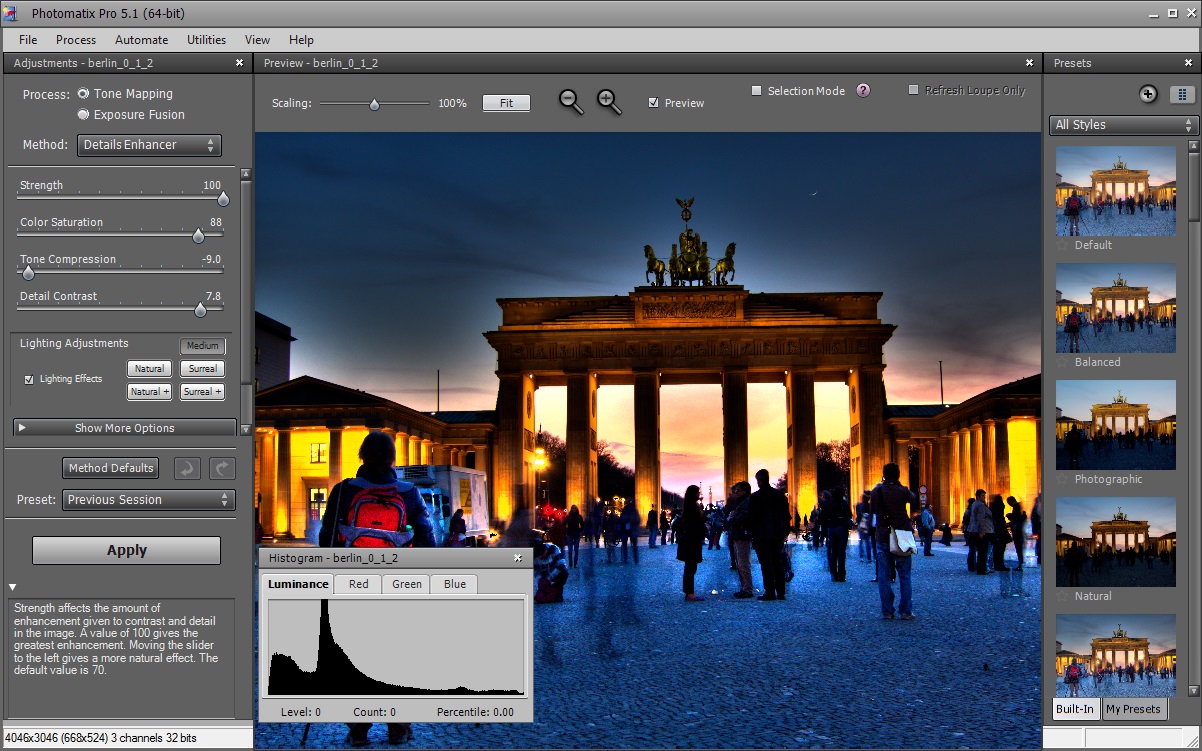

- Photomatix trial full#
- Photomatix trial android#
- Photomatix trial software#
- Photomatix trial trial#
- Photomatix trial license#
Picverse Photo Editor also maximizes artificial intelligence to enable photo editors to restore old pictures. With just a few preset clicks, you can change the background of a picture, set it to silhouette, or even make it a transparent background. By adjusting the colors and contrast, you can give your photo different feels and moods.Īnother exciting feature of Picverse Photo Editor is the Quick Image Background Removal feature. Its built-in artificial intelligence technology helps editors to enhance photo colors and contrast for the best output. It is designed with intelligent tools that deliver top-notch functionalities for image editing.
Photomatix trial software#
Picverse Photo Editor is photo-editing software developed for beginners, intermediate, and advanced level photographers.
Photomatix trial android#
Operating Systems: Mac, Windows, iOS, Android Intelligent Search feature to assist users in choosing the best shot Variety of presets to help beginners become more productiveĪ large amount of presets for quick editing Very fast processing speed and easy accessibility The U POINT Technology for precise editing and adjustments
Photomatix trial license#
Lifetime access through a one-time purchase of a license Ghost removal tool for removing unwanted image componentsĭeghost Overlay function for previewing deghosting operations

Photomatix trial trial#
Mandatory watermark on the free trial version I would be interested to hear from members who have tried this technique in their work or from members who may try it in the future.Adjustable gradient for the independent color picture part editing There are opportunities for further enhancements when the images have been merged, but not to the same extent as with Photomatix. Select the three images then download them into ’Photomerge Exposure Merge’ which is found in Photoshop Elements. A free trial of Photomatix can be downloaded, to create HDR images, including the various enhancements contained in the package to gain the desired result.Īnother way of merging the three exposures to gain a realistic looking HDR image is to use Photoshop. A free trial of the software is available for use so that investigations into various image enhancements can be explored when the three exposures have been merged together. When the image has been downloaded into the software there are many opportunities available to further enhance the result such as tone mapping and exposure fusion. The images can then be downloaded into a software program such as Photomatix or into Photoshop, for the images to be merged together, enabling the best features of each exposure to be exploited to produce the final image. Most modern DSLR cameras can be programmed to take the three different exposures, ideally by setting the camera to make the different exposures by altering the shutter speed rather than the aperture settings. The technique as used today involves taking three photographs of the subject, the metered exposure and then two stops over exposed and two stop under exposed.
Photomatix trial full#
He shot a sequence of exposures that covered the full brightness range of the image, and combined them into a single, high dynamic range picture that would contain detail in everything from the brightest highlight to the deepest, darkest shadow.

In 1993, Steve Mann an American Professor working at the University of Toronto, reported creating a tone mapped image from a sequence of exposures of normal digital images. In 1985 a Software Consultant and Contractor called Greg Ward created the radiance RGBE file format for HDR images which is still in use today. Also an American photographer called Charles Wyckoff, captured the detonation of the first hydrogen bomb, using multiple exposures from a film he developed in 1954.Īs time moved on with more research into digital imaging being undertaken, techniques became more sophisticated, including those applied to HDR. The concept of using different exposures to produce a final image is not new, as shown in the work of Gustave Le Gray, who produced an image ‘The Brig’, from two exposures in 1856. High Dynamic Range (HDR) is a technique that is used to produce a final image that has been generated by three or more different exposures of the same subject that are subsequently merged together using specialized software.


 0 kommentar(er)
0 kommentar(er)
